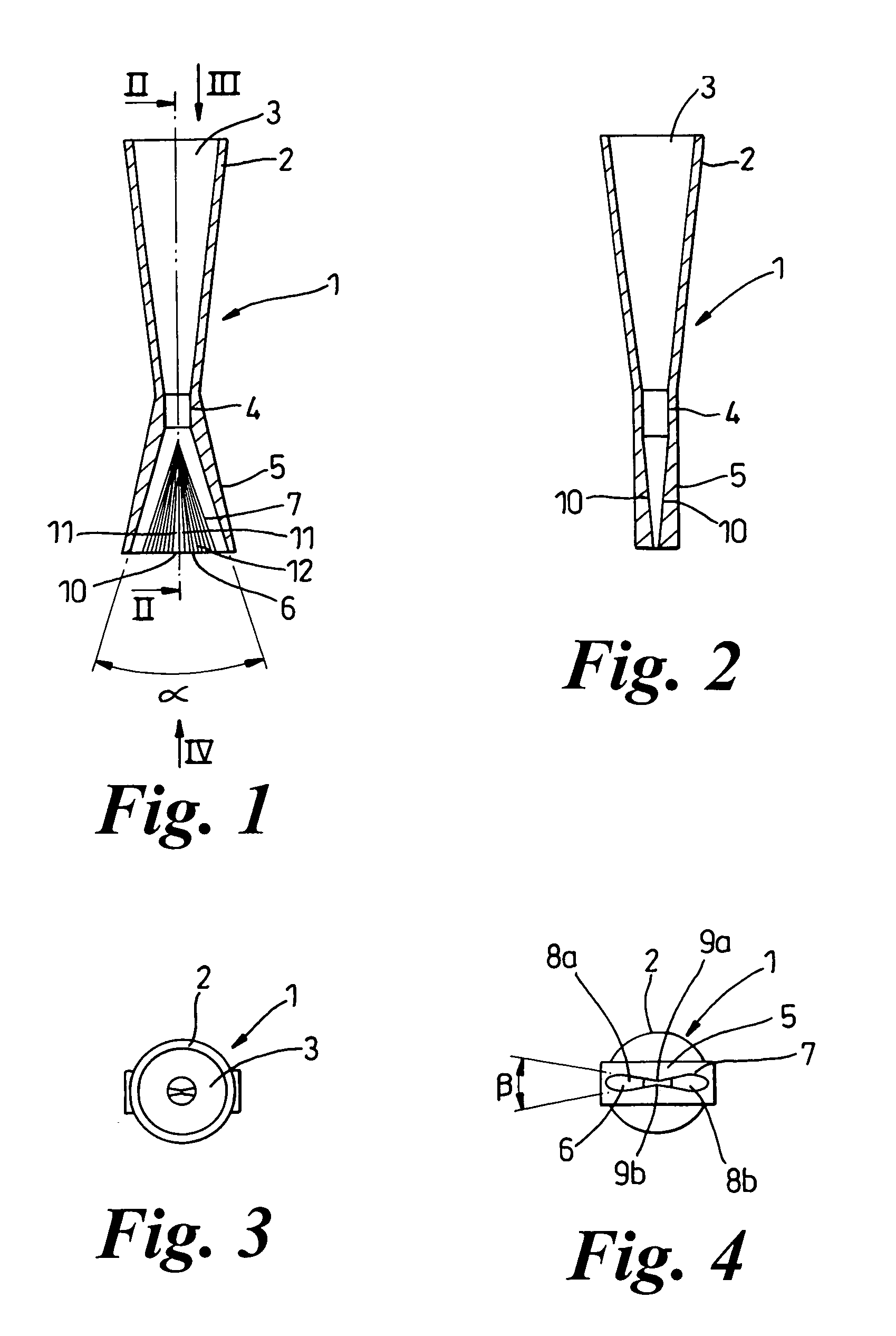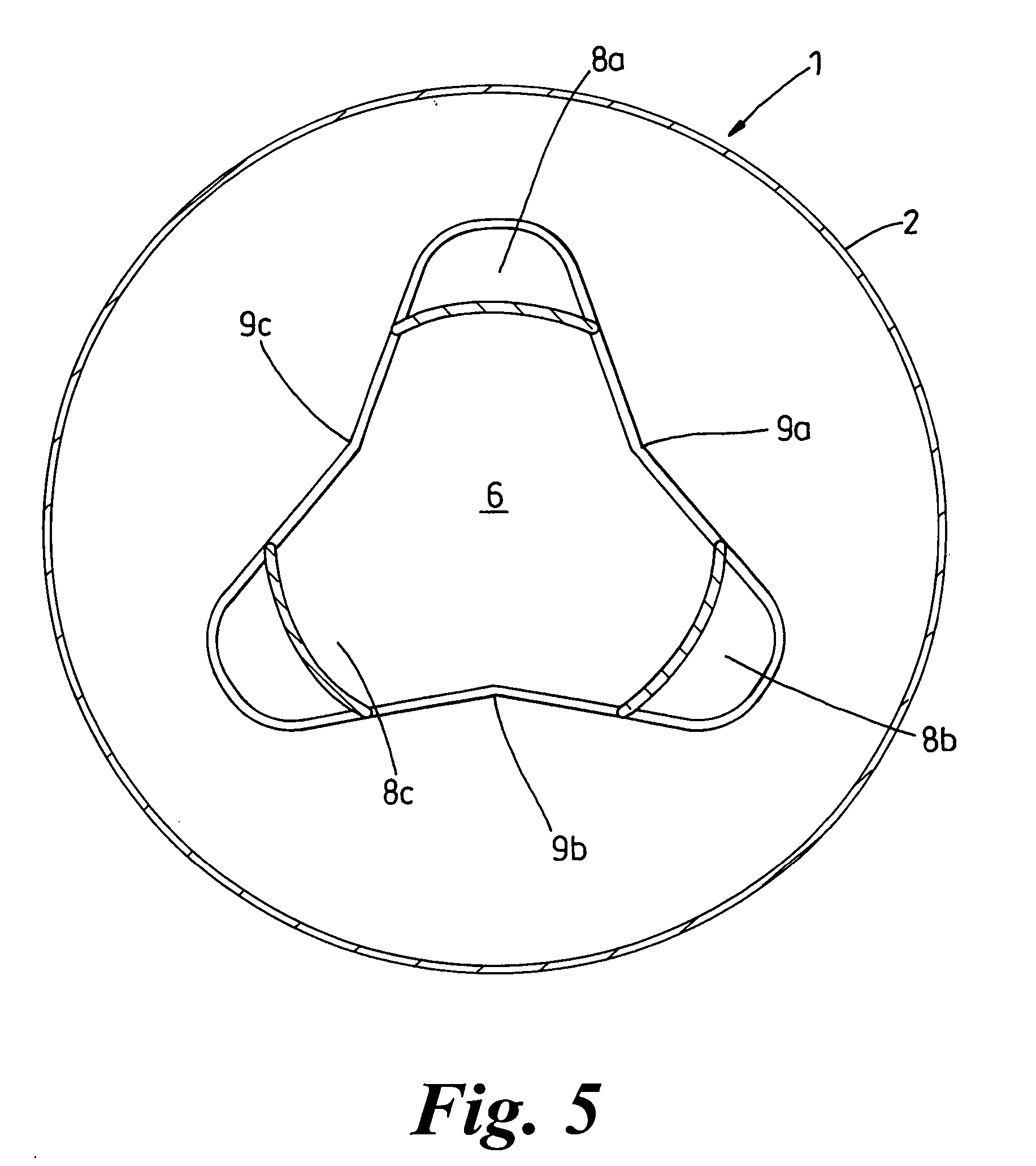Blasting nozzle
a technology of a nozzle and a nozzle body, which is applied in the direction of spray nozzles, blast generating devices, abrasives, etc., can solve the problems of common damage, affecting the use of nozzles, and the underlying surface tends to be damaged, so as to achieve greater cleaning power, increase the quantity of grit, and increase the quantity of abrasives
- Summary
- Abstract
- Description
- Claims
- Application Information
AI Technical Summary
Benefits of technology
Problems solved by technology
Method used
Image
Examples
first embodiment
[0026] With reference to FIGS. 1 to 4, a blasting nozzle 1 according to the invention comprises an inlet 2 for attachment to an outlet hose (not shown) of a conventional blasting apparatus, for example such as that described in WO 03 / 045633. The inlet 2 can be made in any appropriate shape for attachment to the apparatus but typically simply comprises a tubular portion with a circular orifice 3. Downstream of the inlet 2 is an accelerating portion 4 that, as in conventional nozzles, comprises a venturi. The inlet 2 therefore tapers to a short constricted portion prior to commencement of an outlet portion 5 through which an abrasive-laden fluid jet supplied from the blasting apparatus can be ejected and directed onto a surface to be blasted by an operator.
[0027] The outlet portion 5 is defines a single outlet orifice 6 and a single interior surface 7 which is shaped as will now be described to affect the abrasive distribution in the jet. The surface 7 flares from the constricted acce...
PUM
 Login to View More
Login to View More Abstract
Description
Claims
Application Information
 Login to View More
Login to View More - R&D
- Intellectual Property
- Life Sciences
- Materials
- Tech Scout
- Unparalleled Data Quality
- Higher Quality Content
- 60% Fewer Hallucinations
Browse by: Latest US Patents, China's latest patents, Technical Efficacy Thesaurus, Application Domain, Technology Topic, Popular Technical Reports.
© 2025 PatSnap. All rights reserved.Legal|Privacy policy|Modern Slavery Act Transparency Statement|Sitemap|About US| Contact US: help@patsnap.com



